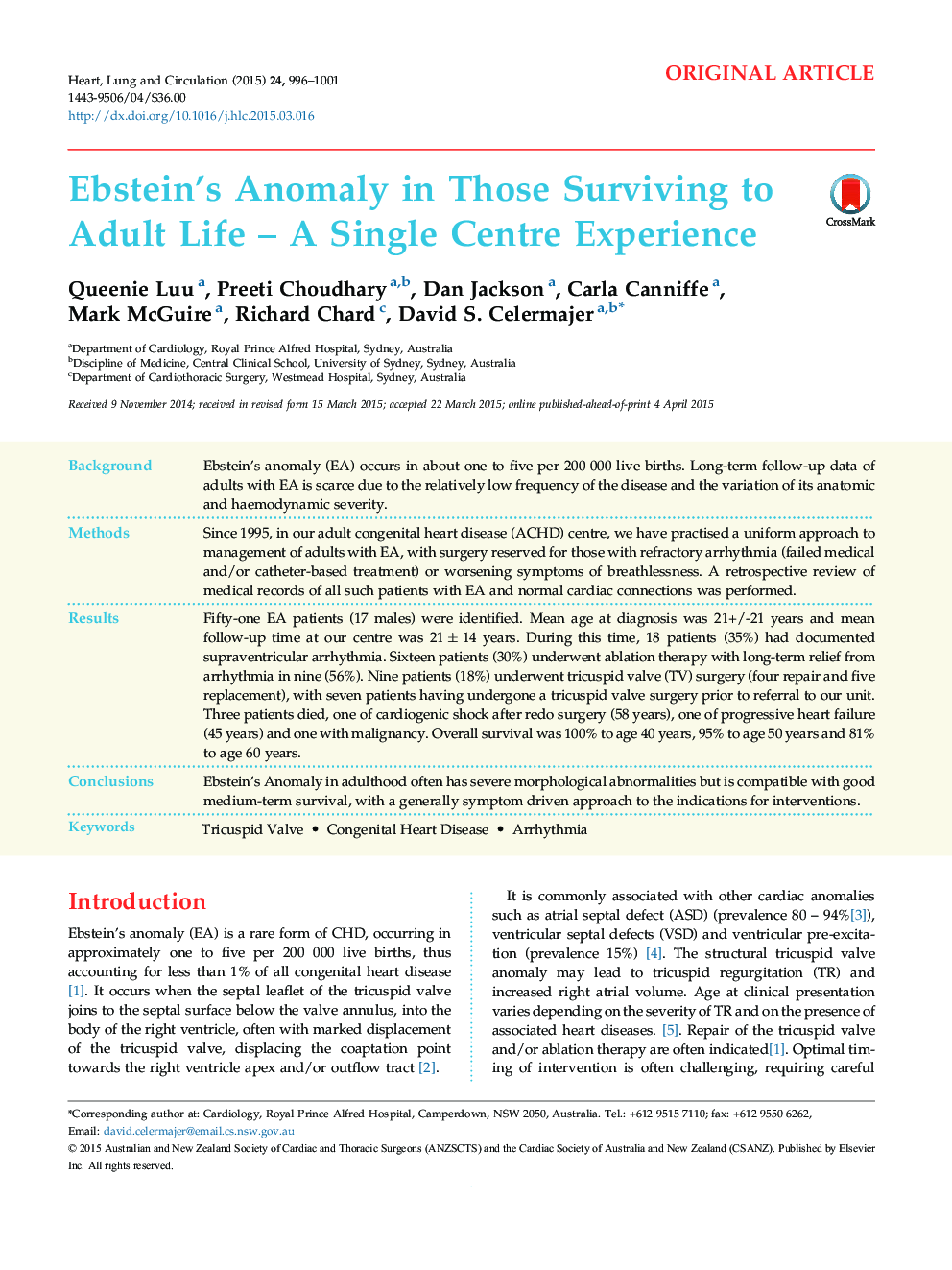| Article ID | Journal | Published Year | Pages | File Type |
|---|---|---|---|---|
| 2917725 | Heart, Lung and Circulation | 2015 | 6 Pages |
BackgroundEbstein's anomaly (EA) occurs in about one to five per 200 000 live births. Long-term follow-up data of adults with EA is scarce due to the relatively low frequency of the disease and the variation of its anatomic and haemodynamic severity.MethodsSince 1995, in our adult congenital heart disease (ACHD) centre, we have practised a uniform approach to management of adults with EA, with surgery reserved for those with refractory arrhythmia (failed medical and/or catheter-based treatment) or worsening symptoms of breathlessness. A retrospective review of medical records of all such patients with EA and normal cardiac connections was performed.ResultsFifty-one EA patients (17 males) were identified. Mean age at diagnosis was 21+/-21 years and mean follow-up time at our centre was 21 ± 14 years. During this time, 18 patients (35%) had documented supraventricular arrhythmia. Sixteen patients (30%) underwent ablation therapy with long-term relief from arrhythmia in nine (56%). Nine patients (18%) underwent tricuspid valve (TV) surgery (four repair and five replacement), with seven patients having undergone a tricuspid valve surgery prior to referral to our unit. Three patients died, one of cardiogenic shock after redo surgery (58 years), one of progressive heart failure (45 years) and one with malignancy. Overall survival was 100% to age 40 years, 95% to age 50 years and 81% to age 60 years.ConclusionsEbstein's Anomaly in adulthood often has severe morphological abnormalities but is compatible with good medium-term survival, with a generally symptom driven approach to the indications for interventions.
